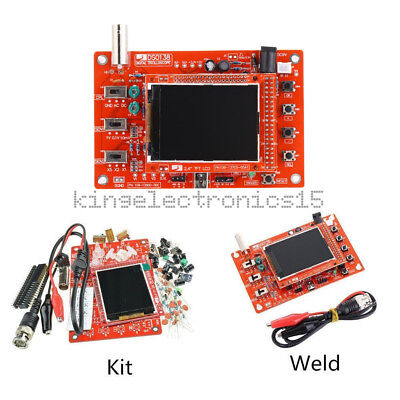...That oscilloscope looks very interesting though- could you send me some details of it please? ...
Yes, no problem. I actually did my homework before buying it, looking on mister YouTube for a lot of these litle osciloscopes and then comparing prices on ebay. I spent like several months doing this thing. Ofcourse, not all the time , but sporadically. Then when my friend insisted on it, I already new a lot of them so it was a smooth push for me to give in. I suggest to you to do the same. FOr sure there are many more optiones there that will satisfy your needs. My prerogatives was cheapness. Im not sure if is the same for everybody else. With these in mind, here is my cheap'o osciloscope link:
Sampling buffer depth : 1024 bytes. Vertical Sensitivity : 10mV / Div - 5V / Div ( 1-2-5 progressive manner ). Available rising or falling edge trigger. Kits using ARM Cortex-M3 processor (STM32F103C8).
www.ebay.com
I keep a separate list on my PC for ebay purchase because they are changing with the weather. For example right now their prices changed for the same exact product:
Now is 17.88 but my deal was at 16.21. Excelent deal for me.
Without plastic case, but im building one from cardboard right now.
If you look lower in the page(scroll down) you will find Product Description, with a lot of information.
You can find at similar price if you search properly. Usually they do that, they change their name both user and product. But if you keep your eyes on the money, you will find it cheap as mine. Be careful not to buy "unsoldered ones". I emailed the guy and I was specifically tell him to send me the soldered one. Because a lot of youtubers were complaining about it, and i learn to avoid it. Youtube is your friend. Use it.
Again, I looked for the cheapest, not the quality. Just enough to do its job.
...My first thought is to use more than one photodiode to look at the illuminated patch of skin from other directions and then combine their signals to determine the presence and closeness of the skin on the palm of the hand. In other words an array of sensors....
Yes, I also suggest a RING of both, sensors and IR leds. I also recomand a high power IR led, like 1W, 3W,5W,10W. If they exist and at what price. I didnt search myself, but I will soon and update you from my side. You should give it a search as well. The ring I have in mind will have around 10x 3mm or 5mm usual leds/sensors. For the power ones, 1 will be enough.
I will update you soon with the circuit that you made for me. I just wake up now and I will start it today.












